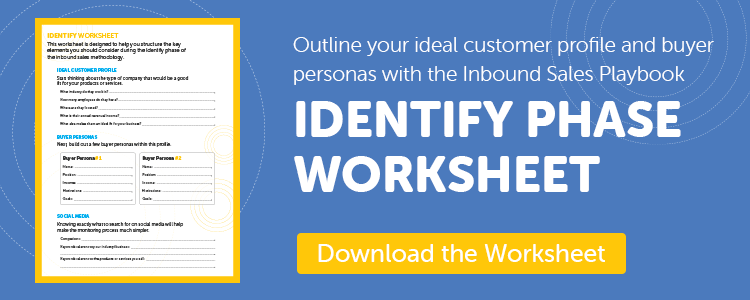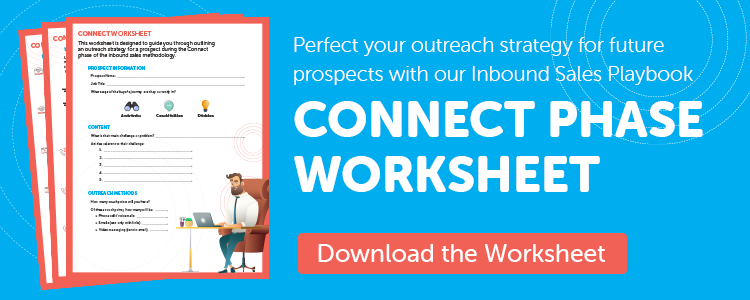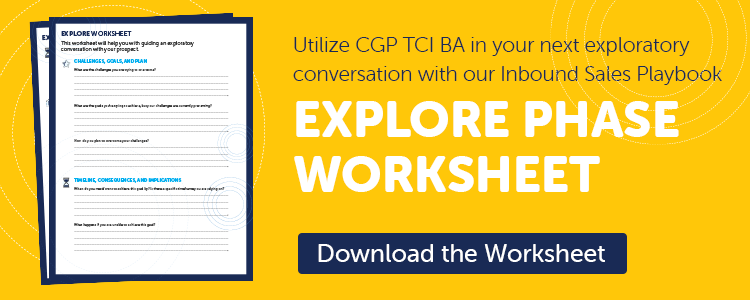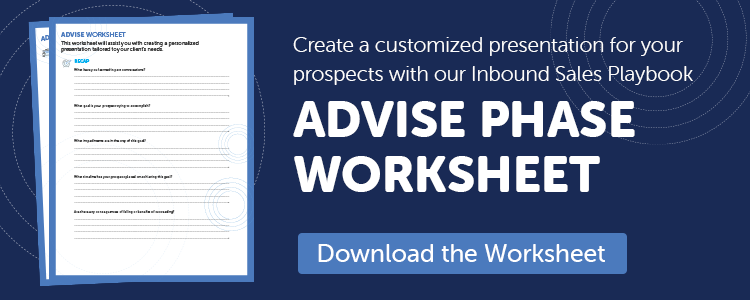Turn Prospects Into Happy Customers:Inbound Sales Playbook
So, your business wants to go inbound with its sales process?
Way to go! You’re already on the right track to getting more leads and finding the right customers. With outbound selling techniques quickly fading out, you need to find new ways to sell your business that work in today’s customer-centric buying world.
You don’t want to feel intrusive with your cold calls and email blasts. But what are the necessary steps to finding good-fit leads and the process of bringing them from a new lead to getting them to sign on the dotted line?
Inbound sales is the answer to everything.
The inbound philosophy revolves around being human, helpful, and holistic. Your messaging should be personally tailored to each individual prospect to build a trustworthy relationship. Once a relationship is established and you have a better understanding of the buyer, you’ll be able to present to them how your business is the best answer to their problems.
The inbound sales strategy can work for any business: it doesn’t matter if you’re B2C, B2B, a small starter business, or a Fortune 500 … you need inbound.
In this Inbound Sales Playbook, we will cover the four phases of the inbound sales strategy – Identify, Connect, Explore, and Advise – and we’ll teach you all the key steps you need to know to find the right leads, send them valuable content tailored to their needs, present to them on how your business is properly fitted to help them, and get them to commit to you.
So, let’s start from the beginning.
Table of Contents
Don't Have the Time?
We get it – you're on the go. Don't worry, you can take the Inbound Sales Playbook with you wherever you are!
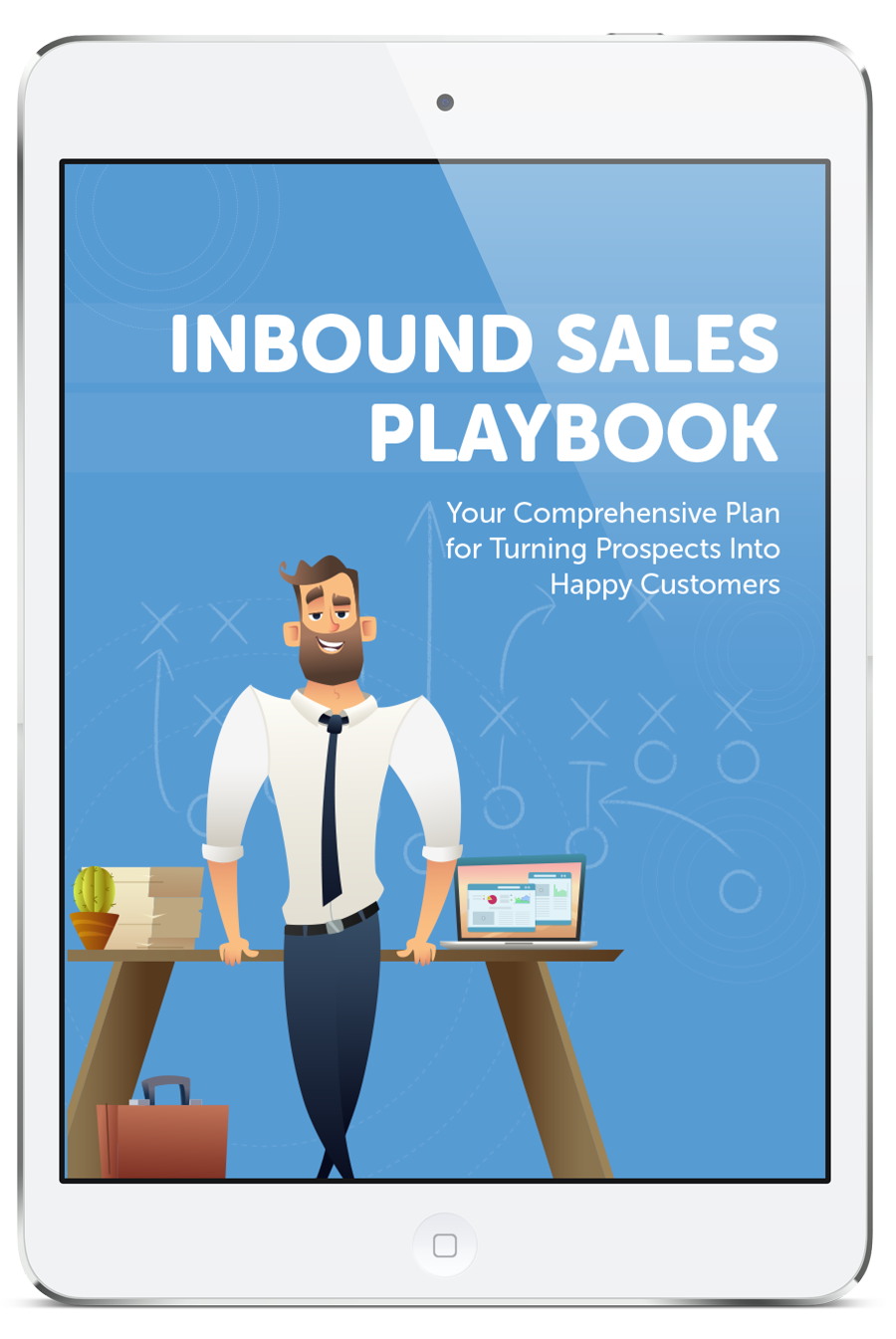
Take the Inbound Sales Playbook To Go!
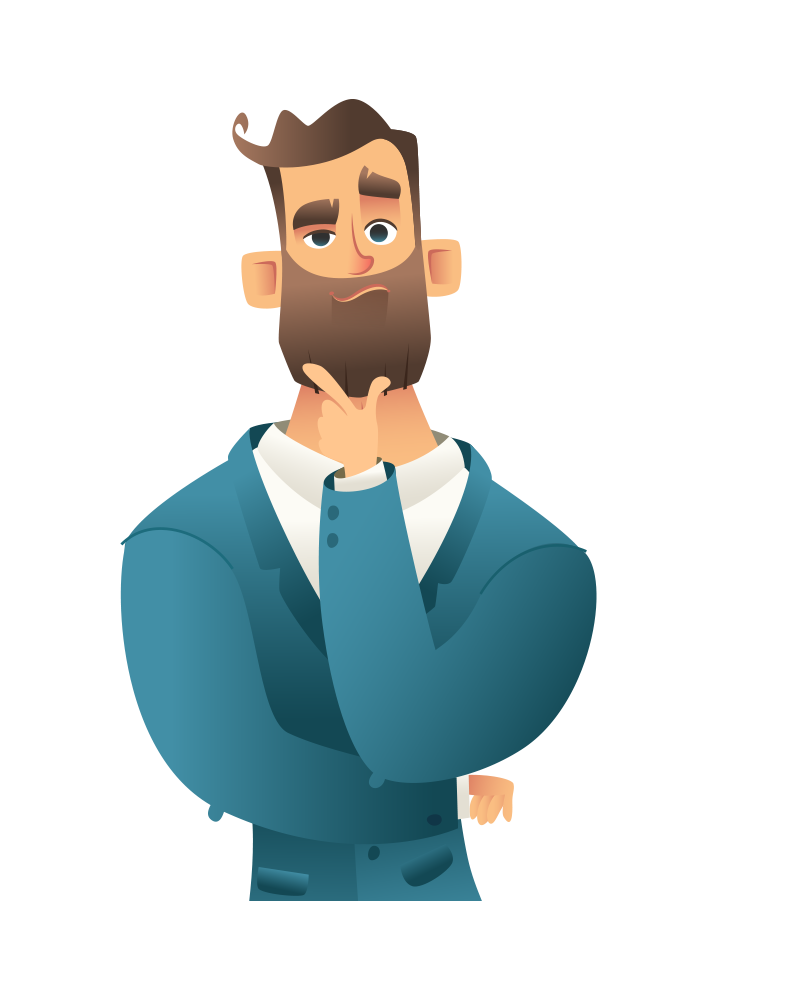
1The Identify Phase
As the first phase of your inbound sales strategy, the Identify phase is used as the starting point for getting new clients or customers.
Who are you selling to?
Knowing who your targeted buyers are will help you determine the next steps for those who are a good fit.
In the Identify phase, your business should:
- Build out an ideal customer profile.
- Create various buyer personas within that profile.
- Monitor social media in search of active buyers.
- Get ahead of the curve and publish relevant content on your blog and social media.
1. Develop the Ideal Customer Profile
A customer profile is what defines the target market for your business, which is why it’s important to start with this step first. Knowing exactly what kinds of companies are an ideal fit for your services will help make sure the rest of your strategy is steered in the right direction.
A customer profile sits at the company level, where you will identify any economic factors, geographic locations, legal standards, etc. that make a customer ideal or not ideal. If you are only trying to find customers that live within 20 miles of your business, then include that in your customer profile.
Note: For a B2C business, your ideal customer profile would be a category of people (e.g., car owners).
Choose only a few key points to use as a base for your customer profile: If you are too specific, the field of potential customers will drastically dwindle, but if you are overly broad, too many potential customers can increase the difficulty and time restraints of weeding out good and bad fits.
2. Create Buyer Personas
When you’ve established your customer profile (e.g., car dealerships with 5+ employees and an annual revenue between $100,000 - $500,000), create buyer personas within that profile.
While a customer profile represents an ideal company, a buyer persona represents a person within that company that you’d like to help. For marketing agencies, the typical buyer personas we target are the VP of marketing and the CEO, depending on the size of the company.
Note: For a B2C business, your buyer persona would be a specific type of person within that category (e.g., first-time car owners, car owners looking to upgrade).
Who are the buyer personas for the companies you are looking to work with? What are their behaviors? What makes them the right fit for your company?
Again, start off simple with a few key descriptions; as you begin to grow your business and identify more behaviors from your customers or clients, you can refine your personas and add more if necessary.
3. Identify Active Buyers and Passive Buyers
Once you’ve established who your targeted buyers are, you’ll have to identify active buyers from passive buyers.
Active buyers are leads who have already begun to identify a problem and are currently researching for possible solutions. They are more prepared to listen to your offer and choose you to help them with their challenge over a passive buyer whose not yet ready to buy. Active buyers who match your customer profile become your leads.
So, who are the active buyers that might be a good fit for your business? You can identify a lead as someone who:
- Calls your company or uses live chat on your website to talk to an employee.
- Reaches out on a social media platform, whether via post, comment, or direct message.
- Fills out a form on your website.
As you find “good fit” prospects, be sure to add buyer context. If you have a customer relationship management (CRM) suite, include information about the buyer’s demographics and interests so that you can have a better understanding of the buyer as the relationship continues.
4. Use Social Selling and Social Monitoring Techniques
Where are all these potential buyers hiding? While some active buyers might already be reaching out to your company for some insights and answers regarding their problem, others might have not yet reached out.
Social media is one of the biggest places your business should monitor for potential buyers who are aware of a problem and are looking for options. On social, you should be cognizant of:
- Users who are mentioning your company or a competitor.
- Users who are mentioning relevant keywords aligned with your products and services or value proposition.
You should also actively publish relevant content on social media so when buyers are beginning their research, your content is there for them.
This content should come directly from your blog so that prospects have a link to your site. The more relevant content you put out for your prospects and those active buyers, the more likely they’ll come back to you for more insight.
But don’t just stop there: Join the social conversation – whether it be on Facebook, Twitter, or LinkedIn. Join the groups your prospects are in, follow industry leaders, and share their content as well.
Once you’ve properly identified the active buyers who are a good fit and defined the buyer persona they fit into, you’ll be prepared with buyer context to move onto the Connect phase of your inbound sales strategy.

2The Connect Phase
The Connect phase should be focused on starting conversations about a buyer’s plans, goals, and challenges. What are their pain points? What issue are they trying to solve?
It’s important to keep the conversation about them. The Connect phase is not the time to push your business on them – you should mention the buyer at least twice as much as you mention yourself.
In this phase, you should:
- Identify each prospect’s specific problem or challenge.
- Create an outreach strategy to educate the prospect on the problem they are exploring.
- Personalize each and every message you send to a prospect.
1. Create an Outreach Strategy That Works
An outreach strategy will outline the content you plan to share and how you plan to reach out to each prospect. Focusing on their particular pain point or issue, find existing content on your website to share to provide value to them.
Your outreach strategy should include a combination of phone calls/voicemails, emails, and live conversations.
These are the outreach methods that receive the most effective responses compared to social media direct messages. These methods are often referred to as “touchpoints.”
Consider how often you want to send these outreach messages. After five touchpoints, however, the law of diminishing returns comes into play. Therefore, you should develop intervals to commit to a specific frequency of reaching out to prospects.
Every other day? Once a week? Find a frequency that fits your prospect’s timeline.
Be sure you are delivering a unique message every time you reach out so you’re providing some sort of new value to the prospect; repetition isn’t something you should go for.
Here are some best practices when it comes to outreaching:
- Keep your messages short and sweet. Voicemails should be no more than 15 seconds, and emails should be 200 words or less.
- End your emails with a question. These questions should be something you will be able to discuss in the next outreach or in a connect call.
- Personalize each and every message that you send. Include buyer context.
2. Personalize Your Outreach
People appreciate when they are heard and understood. When a salesperson can properly relate their messaging to a prospect’s job, industry, specific pain points, etc., they are more likely to trust said salesperson and engage in the conversation. This building of trust is just the start.
This is where the inbound philosophy is most important: be human, helpful, and holistic.
You should connect with your leads in a human way. Be empathetic to their issues and personable in your messaging.
Be helpful by sharing valuable and relevant content that can help them make a more informed decision, and support that decision every step of the way.
Provide a holistic experience for any prospect that interacts with your brand, regardless of where they are situated in the buyer’s journey.
3. Establish Next Steps With Your Leads
Through your outreach methods, you will provide actionable tips that are going to help your leads identify the options to solving their problem. Once you’ve established trust, offer to discuss their situation further.
If they take the next step to connect with your business further by setting up a connect call or by other means, you know they are prioritizing the goal or challenge they are facing.
These leads then become qualified leads.
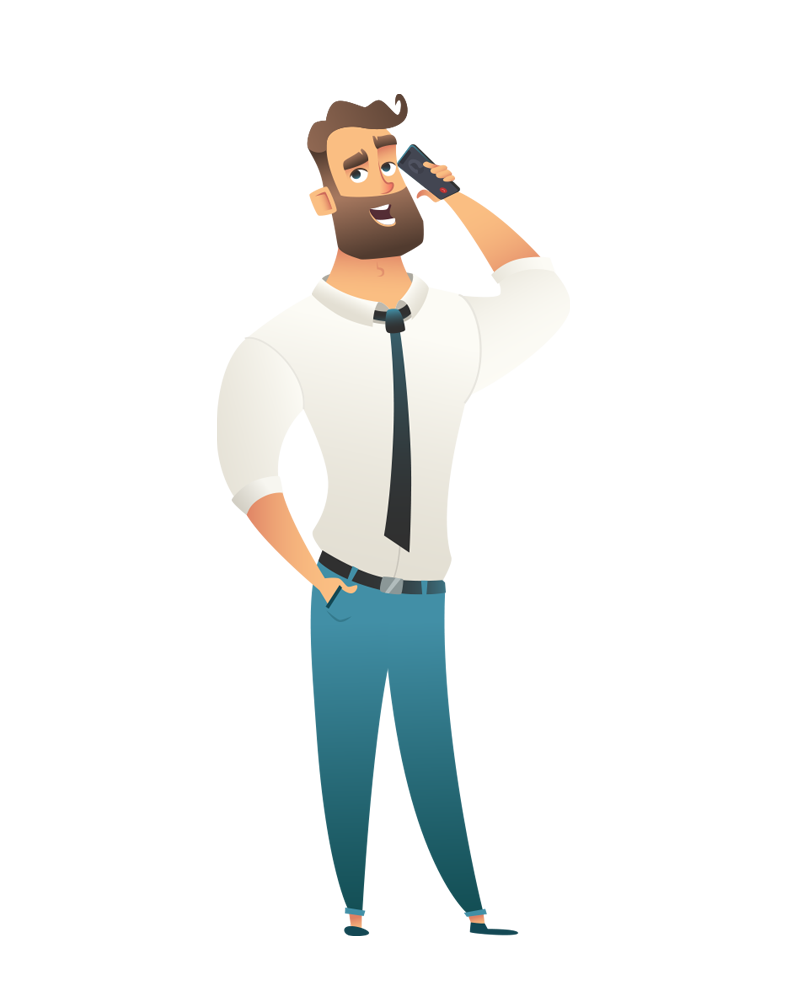
3The Explore Phase
At this point, you’ve identified the prospects that would be a good fit for your business, and a qualified lead has “raised their hand” and confirmed their interest in discussing a challenge they want to overcome.
In the Explore phase, you’ll have to leverage this initial interest in your business to develop trust with the prospect and discover the specific buyer goals they have to determine whether or not they’re a good fit.
During this phase, you will use a qualification framework to:
- Identify the prospect’s goals and challenges.
- Motivate them to take action.
- Establish the budget and authority for the decision making process.
With the right questions and responses, the Explore phase further positions you as a valuable resource to potentially solve a prospect’s problems.
You will build trust and a unique buyer experience for the prospect, and by using strategic questioning and value propositioning, you can guide them to come to their own conclusions: is your business the right fit for them?
Conduct an Exploratory Call
When beginning an exploratory call with a qualified lead, utilize past research on them/their company to build rapport.
Be sure to recap what you learned in previous conversations with them, then confirm with them the agenda for the call: what you plan to address and what they can expect to learn.
The best question framework to follow on an exploratory call is the CGP TCI BA framework, which looks like:
Step One
C – Challenges: What are the challenges your prospect is trying to overcome?
G – Goals: What are the goals your prospect is trying to achieve?
P – Plans: What plan does your prospect have for overcoming their particular challenge?
Step Two
T – Timeline: What is your prospect’s timeline for accomplishing their goals?
C – Consequences: What are the negative consequences of failing to achieve the goals?
I – Implications: What are the positive implications of achieving the goals?
Step Three
B – Budget: What is the budget your prospect plans to invest to achieve their goals?
A – Authority: Who needs to be involved in the decision making process?
During CGP
During this initial step, you’ll ask your prospect to identify the challenges they are facing, the goals that this challenge is impeding on, and the plan they have for overcoming their challenge.
You want to get your prospect thinking about the business value your company can provide if they choose you.
When hearing about their plan, consider past efforts and future efforts: have they tried to overcome this challenge before?
The most important question to ask them is, “Are you open to new ways of solving your challenges?” If the answer is no, they probably aren’t the right fit for your services.
During TCI
This part of the qualification framework will help you motivate the prospect to take action by verbalizing the potential consequences of failing to achieve the goal and the potential implications that can result from achieving the goal.
By identifying the personal motivations behind a goal (e.g., wanting to move into a larger office), you can offer valuable advice on the required steps it will take to achieve their goal.
During BA
Unlike the BANT framework, the CGP TCI BA framework addresses budget and authority last. It’s more important to get a better understanding of the motivations and roadblocks of a prospect’s specific goal, and you’ll be able to build credibility in explaining the solutions your business can provide to help them achieve their goal.
After you’ve discussed these, then the prospect will be more comfortable with your business and be willing to discuss their intended budget and who should be involved.
Understanding Your Prospect's Wants and Needs
Use the CGP TCI BA framework as an outline for the flow of your conversation. It’s important to employ active listening during your conversation with your prospect: you should express a genuine interest in discussing their goals and identifying the key elements for a possible solution.
Repeat their answer back to them and confirm that you heard them correctly; ask relevant follow-up questions for an even better understanding of the prospect’s situation and options.
Having a qualification framework is important so your business will properly be able to identify if their concerns are the right fit for the products or services you offer.
Through your advice, it will also position your business as a thought leader and a valuable option for solving their specific goals.
From this phase, you’ll have a better understanding of whether or not the prospect wants or needs your help. If their challenges and goals align with your offering, these qualified leads become opportunities.

4The Advise Phase
In the final phase, you are looking to get a customer. Therefore, you need to inform your prospect exactly how your products or services can be uniquely tailored to address their specific challenge.
In the Advise phase, you will:
- Recap what you’ve learned during the exploratory call and share the insights you gathered.
- Deliver a personalized presentation based on the client’s goals, your company’s value propositions, and a targeted proposal for your services.
- Work backwards to determine when they need to sign your contract.
- Get a commitment from the buyer.
1. Recap and Share Insights
Recapping what you learned in previous conversations will signify to your prospect that you are fully aware of the challenges they face.
By giving credible advice as to what these specific challenges, goals, and timelines look like from the buyer’s perspective based on your past clients or research, you’ll have a better understanding of where the prospect is and position yourself as trustworthy source and viable option.
2. Personalize Your Presentation
Once you briefly go over what you’ve learned from them in the past, you’ll next deliver a personalized presentation that explains how your process is uniquely positioned to help them with their challenges and goals.
Outbound sales methods revolve around giving the same cookie-cutter overview presentation to each and every prospect – prospects pick up on this. Instead, each presentation needs to be tailored to the prospect.
In your presentation, use the term “we” to encourage a relationship between you and the buyer.
But don’t focus solely on your business in the conversation – your focus is on the buyer and determining the ways your business can help them. Your advice should touch on these key points:
- The different approaches the prospect can take
- The pros and cons of these approaches
- What approach you feel is best
- Why it is the best approach
- How your business can help support that approach with its products or services
Following this framework when suggesting the ways to achieve the buyer’s goals will allow you to answer exactly what they’re thinking: “Why should I buy from you?”
Answering these questions will inform the buyer of the various paths they can take but will encourage them to take the one that ends with you.
Be specific in your presentation; if your response is too broad, the buyer will find it hard to understand how you can tailor your services to help their own needs.
Be sure to only mention the certain products or services that pertain to your prospect’s challenge. Don’t sell your entire business. Also, focus your suggestions around what is most important to the buyer; while they may have multiple challenges or goals, you should stay focused on which ones are the most imperative to overcome.
By doing this, you acknowledge their biggest weakness and should leverage that to explain how your business can turn it into a strength.
3. Confirm the Timeline and Authority
Once you’ve addressed how your business can help them, you should always confirm the timeline of completing their challenge and their respective budget so you can “work backwards” to identify when they need to sign the contract.
Don’t forget to ask about authority: does anyone else need to be involved in the decision making process? If so, you should encourage a meeting with all the necessary people so you can get on the same page and encourage them to sign.
Before confirming their commitment, uncover any concerns or objectives they may have: What is keeping them from signing immediately? Are there any things you should address with them?
Ask them openly about what’s holding them back, and answer their concerns to the best of your ability. Keep in mind that the decision is theirs and your job as an inbound salesperson is to convince them that your business is right for the job without pushing them to choose you.
At this point, your prospect should have all the information they need on their challenges and the ways your business will be able to overcome them. You’ve properly sold your business as the best viable option to achieve their goals, and now it’s up to them.
Ultimately, you just have to wait for the go-ahead: get them to say it themselves: They need you for the job.
If they do choose you, they believe that you’ll be able to help them reach their goals, and they believe that your business is able to close the gap between where they are and where they want to be.
Now It's Your Turn!
Remember that sales doesn’t happen in a day.
It takes time and effort to find the right leads, nurture them in a unique, personalized way, and convince them to sign on the dotted line.
With these four key phases in mind, your business will be prepared to take your sales inbound.
